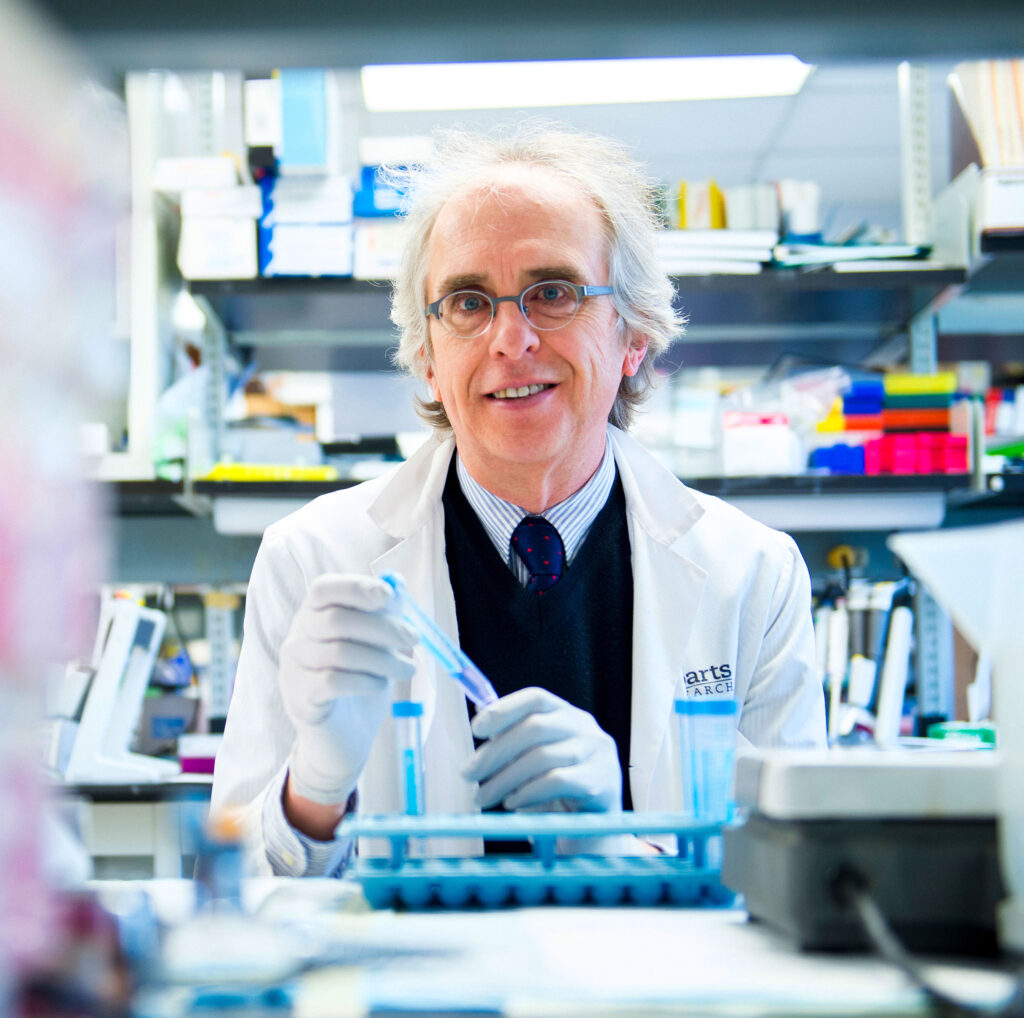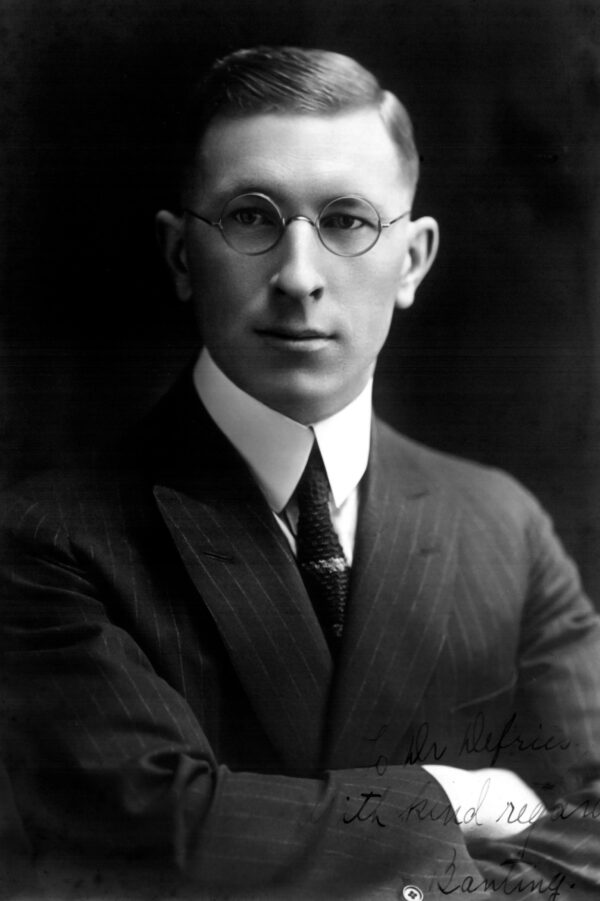Dr. Frederick Banting would have been first to admit his medical practice wasn’t shaping up as he’d hoped. Unable to secure a hospital position in Toronto after serving as a surgeon on the front lines of the First World War, Banting set up shop in London, Ont. — only to find he had too few patients to make ends meet.
Upon such career ‘failures’ are heroes made. Had Banting’s medical practice been a success, he may not have moonlighted as an instructor at Western’s medical school 100 years ago.
He wouldn’t have been cramming late into a sleepless night, on Oct. 31, 1920, so that he could deliver a lecture to students the next day about the role of the pancreas in digestion and regulating blood sugar.
He wouldn’t have penned 25 words that would unlock life for millions of people with diabetes: “Diabetus. Ligate pancreatic ducts of dog. Keep dogs alive till acini degenerate leaving islets. Try to isolate the internal secretion of these and relieve glycosurea.”
This year, the world celebrates the 100th anniversary of the discovery of insulin — an idea incubated at Western and hatched in an upstairs bedroom of Banting’s medical office in London, Ont.
There have been many strides in treating diabetes since then, said Dr. Rob Hegele, a leading international endocrinologist and distinguished university professor of medicine and biochemistry at the Schulich School of Medicine & Dentistry.
“But here was really that one event that set everything in motion,” Hegele said. “It’s almost a mythological story.” Hegele and Grant Maltman, BA’91, curator of the Banting House National Historic Site of Canada, are co-authors of a paper in The Lancet Diabetes & Endocrinology, that firmly positions London as the birthplace of insulin.
Paying homage
Banting’s confidence in his abilities far outpaced his experience or research credentials, the paper notes. But something in Banting’s moxie must have persuaded University of Toronto physiologist John James R. Macleod to provide the young surgeon lab space, an assistant, some laboratory dogs and two months to work on the problem of diabetes.
Their success in purifying and administering insulin led to a Nobel Prize in Medicine in 1923. (Macleod and Banting shared the prize with colleagues Charles Best and James Collip, who would later become Western’s dean of medicine).
Diabetic patients the world over continue to pay homage to that eureka moment at the Banting House in London, Ont.
Noted Maltman, “This is serendipity, this is an act of divine intervention, the Moon and Mars and Venus, all wrapped into one. This is one man with one idea that changed the world — all because of a guy who didn’t have two nickels to rub together, and there happened to be a teaching position open at Western.”
‘Bit-by-bit, step-by-step’
London researchers continue that legacy to save lives.
Among them is Dr. Irene Hramiak, professor of endocrinology and metabolism at Western’s Schulich School of Medicine & Dentistry and an endocrinologist at St. Joseph’s Health Care London. Among her many distinctions, she received the American Diabetes Association’s Charles H. Best Award for distinguished service in 1993.
She has led or co-led more than 50 clinical research trials for people with diabetes.
Hramiak draws a straight line between her research and the important work undertaken decades ago by London doctors John Dupré and N. Wilson Rodger, part of an international team that conducted the Kroc collaborative trial to understand microvascular complications — specifically eye damage — in people with diabetes. It led to the decades-long Diabetes Control and Complications Trial, which examined causes and solutions to complications in people with Type 1 (insulin-dependent) diabetes.
“This was the beginning of what we consider randomized control trials in diabetes treatment,” Hramiak said.
She is examining the benefits of changing the traditional approach to treating people newly diagnosed with Type 2 diabetes.
Ordinarily, doctors will prescribe lifestyle changes, such as diet and exercise, until the disease progresses and additional medications need to be added — ultimately to the point where the patient needs insulin.
But several of Hramiak’s trials examine whether it’s possible to “re-set” the pancreas from the beginning — to prevent the progression to more medications — by starting with an intensive course of insulin and medications, in addition to conventional lifestyle changes.
“We’re seeing if we can cause a remission — we can’t call it a cure — in people who are newly diagnosed.”
In her long career, she has found there are no quick answers.
The work is collaborative and cumulative, and even trials that don’t meet their hoped-for results are a kind of success.
“You have to keep asking the questions and keep doing the work. It’s bit-by-bit, step-by-step, and everybody adds their piece to the puzzle.”

Genetic keys to a solution
Hegele, likewise, is among the leaders in diabetes research and treatment.
He treats more than 2,000 patients in his lipid clinic, and has written or co-authored 800 research papers that have been cited more than 35,000 times.
Lipid levels (fatty compounds such as high cholesterol that can lead to early heart disease and stroke) are often a “package deal” with diabetes, noted Hegele, who is also director of the London Regional Genomics Centre at Robarts Research Institute.
Consensus is emerging that the Type 1 and Type 2 diabetes classifications may be too narrow, he said, and there may be five or more subtypes along a genetic spectrum.
Until now, figuring out what treatment or combinations of treatments will work best with a patient has often been a matter of trial and error, Hegele said.
His work in genetic analysis, though, could unlock some doors to treatment.
For a small subset of diabetics, the disease is a result of one genetic “misprint,” he said.
“But we’re also learning that, rather than a single misprint on a single gene, a greater percentage of people will have a variety of misprints on a variety of genes.
“Individually, each one of these changes may not be enough to make the person diabetic — but cumulatively, there are enough misprints that they’re acting as a team, as if the patient has inherited a single large-effect gene variant that puts them at risk.”
Creating genetic profiles of diabetes could help clinicians understand which specific genotypes will respond to diet and exercise, and which are more likely to have success with additional interventions.
Like much of the research in the field, it is a work in progress. “Maybe in five years we can have more definitive answers,” Hegele said.
Expanding the knowledge base
For all the advances in medical research in the past century, diabetes still kills more than 1.6 million people each year.
The Banting House flame, marking the place where professor Banting first ignited hope for diabetics, will continue to burn until there’s a cure. Hegele is optimistic that hard work and a measure of serendipity will make it happen.
“One hundred years ago, you could learn everything that was known about diabetes at the time from a chapter in a medical textbook. Now it would take several textbooks just to skim the surface.
“We don’t have a cure — that’s the ultimate goal — but we’re in a golden age where there are so many possibilities.”
